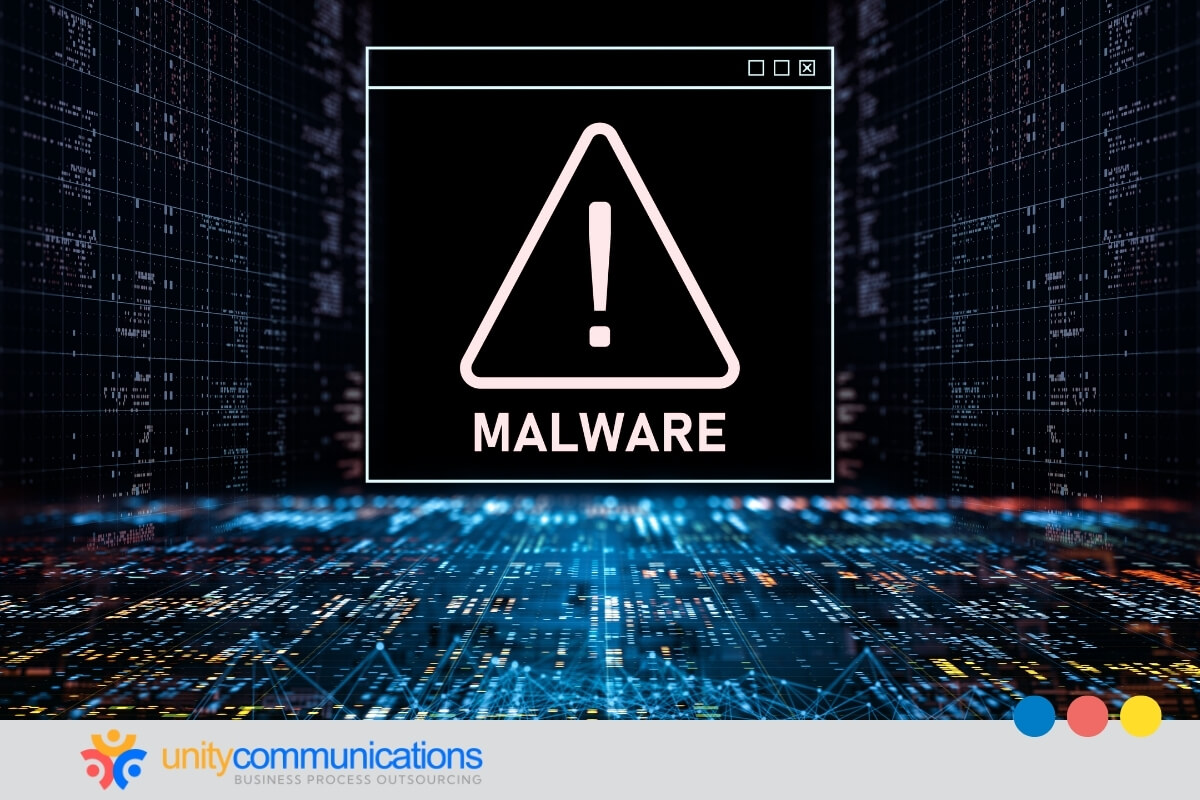Table of Contents
Natural disasters, cyberattacks, and political unrest threaten all industries, including business process outsourcing (BPO). The unpredictability of crises necessitates a robust framework to mitigate their impacts effectively.
The good news is that tried-and-true methods for responding to crises are available. In this article, you will learn BPO crisis response strategies to foster resilience and continuity in adversity.
Understanding the nature of crises in the BPO sector

The BPO industry faces various crises. Examples include the following:
Economic downturns
Economic downturns pose significant challenges to the BPO sector. During the global financial crisis of 2008–2009, the industry experienced a notable growth slowdown.
Many clients reduced their outsourcing expenditures to cut costs. The International Monetary Fund (IMF) reported a global economic contraction of 0.1% in 2009, directly affecting the demand for BPO services.
Natural disasters
Natural disasters can severely disrupt BPO operations. For example, the Philippines is a leading BPO hub susceptible to typhoons and earthquakes. In 2013, Typhoon Haiyan was one of the strongest tropical cyclones ever recorded. It caused significant damage to the country’s infrastructure and led to major service interruptions in operations.
Political instability
Political instability creates uncertainty and operational challenges in the BPO sector. Eastern Europe and parts of Asia often experience political unrest, which can result in workforce displacement and regulation changes. For instance, Ukraine’s political tensions have raised concerns about the region’s stability and reliability of outsourcing services.
Cybersecurity threats
Cybersecurity threats are a growing concern for the BPO industry. Vendors handle massive sensitive data, making them prime cyberattack targets. According to a report, cybercrime could cost the world $10.5 trillion annually by 2025. This statistic underscores the vulnerability of BPO firms and the critical need for robust cybersecurity measures.
What is BPO’s approach to building resilience and business continuity when a crisis hits? The BPO industry can leverage well-designed crisis response strategies to safeguard operations during unexpected events.
Key BPO crisis response strategies

Effective crisis response strategies can be the difference between a minor hiccup and a significant operational meltdown. Here are vital practices that BPO companies employ to navigate crises:
1. Comprehensive risk assessment
A thorough risk assessment identifies potential threats to operations. It involves analyzing internal and external factors that affect the business, such as natural disasters, cyberattacks, or political instabilities. Regular risk evaluations help companies remain vigilant and prepared for various scenarios.
2. Crisis management team (CMT)
Establishing a dedicated CMT is an effective crisis response. The crisis management team develops, implements, and oversees the crisis management plan. It includes representatives from different departments for a well-rounded approach to handling crises.
3. Business continuity plan (BCP)
A robust BCP outlines procedures to maintain essential functions during a crisis. The business continuity plan covers data backup, alternate work sites, and critical staff roles. Regular drills and simulations allow employees to understand their roles and act quickly during crises.
4. Communication protocols
Clear communication is essential during a crisis. BPO companies develop communication protocols for timely and accurate information dissemination to internal and external stakeholders. These include using multiple channels, such as emails, instant messaging, and dedicated hotlines, to keep everyone informed.
5. Technology and infrastructure resilience
Investing in resilient technology and infrastructure minimizes the crises’ impacts. It includes using cloud-based services for data storage, having redundant systems, and employing cybersecurity measures to protect against data breaches. Regular maintenance and updates keep systems running smoothly.
6. Employee training and support
Training BPO employees to handle crises is vital. Regular training sessions and workshops prepare staff to respond effectively. Psychological support and counseling also help them cope with stress and maintain productivity during challenging times.
7. Client collaboration
Maintaining open lines of communication with clients is key. BPO companies work closely with clients to understand their needs and expectations during a crisis. Collaborative planning aligns all parties, encouraging them to work together to minimize disruptions.
8. Post-crisis evaluation
After a crisis, evaluating the response is essential for continuous improvement. The CMT conducts a post-crisis review to identify what worked well and needs improvement. The team incorporates lessons into the BCP to enhance future responses.
9. Public relations management
Managing public relations effectively helps maintain the company’s reputation during a crisis. Transparent communication with the media and stakeholders builds trust and demonstrates its commitment to resolving the issue.
10. Regulatory compliance
Complying with relevant regulations and industry standards is non-negotiable. BPO companies regularly review and update their policies to align with legal requirements, reducing the risk of legal complications during a crisis.
Importance of proactive crisis planning in BPO
BPO firms operate in a highly competitive environment, managing critical operations for clients across various industries. Proactive crisis planning is essential to mitigate risks and promote seamless operations.
Here’s a breakdown of the critical elements involved in proactive crisis planning:
- Strategic planning. Identify potential risks, including their impact on business operations. Develop robust strategies to address possible issues. Ensure readiness with well-thought-out responses to unexpected events.
- Communication plan. Create a comprehensive plan for clear and consistent communication during a crisis. Outline how to share information with all stakeholders, including employees, clients, and partners. Maintain alignment and trust by reducing confusion through effective communication.
- Damage control. Equip tools and protocols to minimize the impact of crises. Quickly identify issues, assess the damage, and implement mitigation measures to maintain service continuity and protect the company’s reputation.
- Regular training and simulations. Conduct regular drills to prepare teams for handling crises efficiently. Build confidence and competence for quicker, more effective responses in real crises.
By focusing on strategic planning, developing a robust communication plan, and prioritizing damage control, BPO vendors can navigate crises effectively and emerge stronger.
Reactive strategies for immediate crisis response

Having effective reactive strategies in place is also vital. When a crisis occurs, a framework for immediate response and resolution fosters business resilience. Here’s a look at the essential components of reactive crisis response strategies:
- Immediate assessment. Quickly evaluate the situation to understand the scope and impact of the crisis. Identify potential crises early by monitoring key indicators and gathering all relevant information to inform decision-making.
- Swift communication. Activate the crisis communication plan to inform all stakeholders. Utilize social media platforms to disseminate information rapidly and reach a wider audience. Provide clear, consistent messages, instructions, or updates.
- Resource allocation. Mobilize necessary resources, including personnel and technology, to address the crisis. Ensure that key team members are available and ready to take action.
- Stakeholder management. Keep clients and other stakeholders informed throughout the crisis. Provide regular updates and maintain transparency to preserve trust and credibility.
- Post-crisis analysis. Conduct a thorough response analysis after managing the immediate crisis. Identify what worked well and areas for improvement to enhance future actions.
Effective crisis communication within BPO teams
BPO teams often deal with complex processes and dynamic setups, making efficient communication critical during a crisis. Below are strategies for enhancing crisis communication within BPO teams:
Establish clear communication channels
Designate specific communication channels for crises. Use Slack, Microsoft Teams, or dedicated phone lines to update all or send instructions. Regularly test these channels to ensure they function correctly under pressure.
Develop a crisis communication plan
Create a comprehensive crisis communication plan outlining roles, responsibilities, and protocols. Include the following:
- Crisis response team. Identify core team members responsible for managing communication.
- Communication hierarchy. Define the flow of information from decision-makers to all team members.
- Message templates. Prepare templates for different crisis types for quick and consistent messaging.
Train teams regularly
Conduct regular training sessions to familiarize team members with the crisis communication plan. Include simulations of potential crises to practice real-life responses. Training helps teams react swiftly and effectively when a real crisis occurs.
Maintain transparency and timeliness
During a crisis, provide timely updates to all team members. Transparency about the situation and the steps to address it builds trust and keeps everyone informed. Avoid speculation and stick to verified information to prevent the spread of rumors.
Leverage technology
Utilize technology to enhance communication during a crisis. Automated alerts, crisis management software, and real-time collaboration platforms facilitate seamless information flow. Train team members to use these tools effectively.
Foster a supportive culture
Encourage a culture of open communication and support within the team. Make team members feel comfortable raising concerns and sharing information during a crisis. A supportive environment enhances collaboration and helps the team navigate challenges more effectively.
Review and improve
After a crisis, conduct a thorough review of the communication process. Gather feedback from team members and identify areas for improvement. Use these insights to update the crisis communication plan and enhance preparedness for future crises.
Building a resilient organizational culture in BPO

Resilience in BPO involves establishing a workplace environment that can withstand and adapt to various challenges, such as economic shifts, technological advancements, and evolving client demands.
One of the primary aspects of resilience in BPO is crisis management and business continuity planning. Effective crisis management anticipates disruptions and prepares strategic responses. A solid plan minimizes the negative impact of unforeseen events and maintains operations despite adversities.
BPO vendors must emphasize employee engagement and well-being to foster a resilient culture. Engaged employees are more likely to be adaptable in the face of challenges. Regular training programs and workshops can equip employees with the necessary skills to handle crises and adapt to industry changes.
Transparent communication and strong leadership are also crucial. For instance, during the global financial crisis, BPO companies that maintained communication with employees and clients navigated the turbulent period more effectively. Leaders who engaged with teams and provided clear direction instilled confidence and stability within the organization.
Another critical element in building resilience is fostering a culture of continuous improvement. Encouraging employees to provide feedback and contribute ideas for process enhancements can lead to more innovative solutions and a more robust organizational framework. BPO firms that prioritize learning and development are better equipped to handle disruptions.
The bottom line
The BPO industry faces many potential crises, from economic downturns to natural disasters and cybersecurity threats. To ensure resilience and continuity, BPO firms must implement comprehensive risk assessments, establish dedicated crisis management teams, and develop robust business continuity plans.
Investing in these BPO crisis response strategies safeguards the business and enhances its reputation and reliability.
Let’s connect to discuss building resilience and maintaining continuity within the BPO industry!




